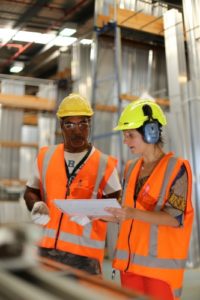New Zealand demographic trends leading to manufacturing skills shortages
The aging of New Zealand’s manufacturing workforce, a decline in school leavers, and a shortage of skilled people continue to challenge manufacturers to find new ways to bridge their skill gaps.
“We talk to manufacturers across New Zealand every week,” says Andy Bunny, National Manager General Manufacturing at manufacturing industry training organisation Competenz. “They’re all telling us the same thing: it’s hard to attract and retain skilled people.”
 The manufacturing workforce is aging. In 2006, 55% of the general manufacturing workforce was aged 40 and over. In 2014 that figure was 64%. The trend is similar in specialised manufacturing industries too, like plastics processing and wood manufacturing.
The manufacturing workforce is aging. In 2006, 55% of the general manufacturing workforce was aged 40 and over. In 2014 that figure was 64%. The trend is similar in specialised manufacturing industries too, like plastics processing and wood manufacturing.
“These are big numbers,” says Andy. “And they bring with them big challenges. These older people have built up skills during their careers. Who’s going to replace those skills when they retire? Who’s going to mentor younger people? And, if you’re a small manufacturing business, who are you going to sell your company to, so you can enjoy a comfortable retirement?”
He warns employers not to rely on school leavers to plug the gaps.
“The number of young people leaving school is volatile: it’s fallen strongly since 2004 and that fall’s going to continue for a few years yet. And employers across New Zealand are competing for these people.”
Bringing in skilled immigrants can help, but it introduces new challenges like language and a lack of familiarity with New Zealand practices. Poaching another company’s employees is self-defeating. “It becomes a vicious circle.”
The solution? According to Andy, the manufacturing sector needs to look at this issue at an industry level and invest in technical and business skills for the long term.
“Training is a sustainable way to lift productivity, quality and safety. It has lots of spin-off benefits too, like increasing your employees’ confidence and loyalty.
“The government subsidises workplace training to keep the costs manageable. They do this because they recognise that New Zealand industries – including manufacturing – benefit from having a skilled workforce. And those benefits are long-term and lasting.”



